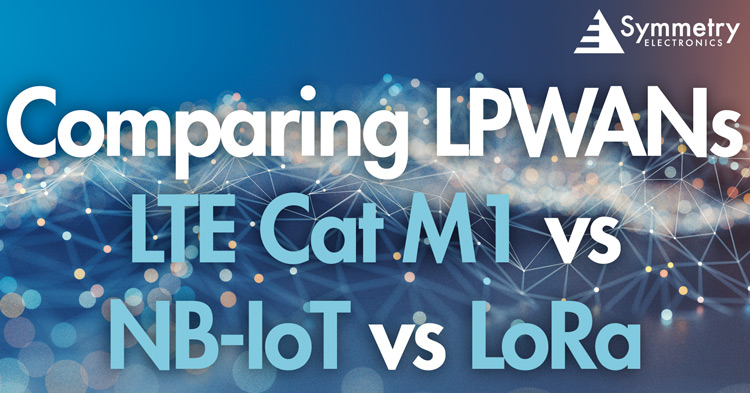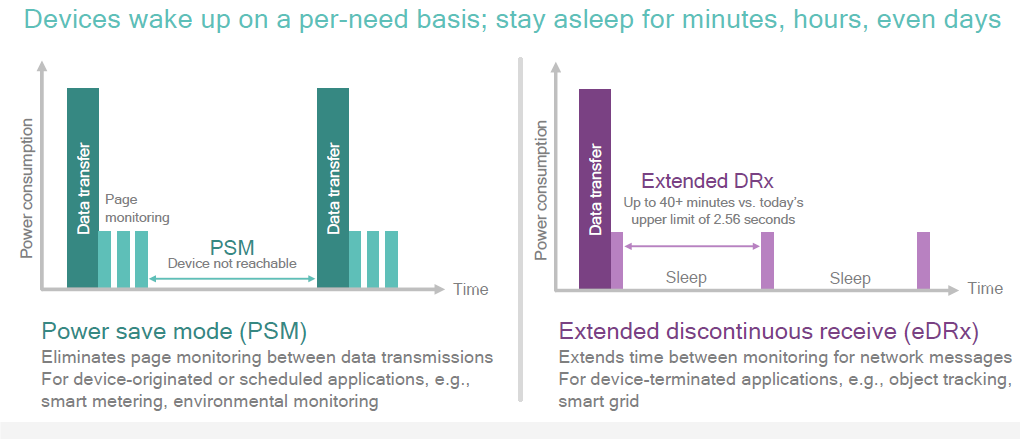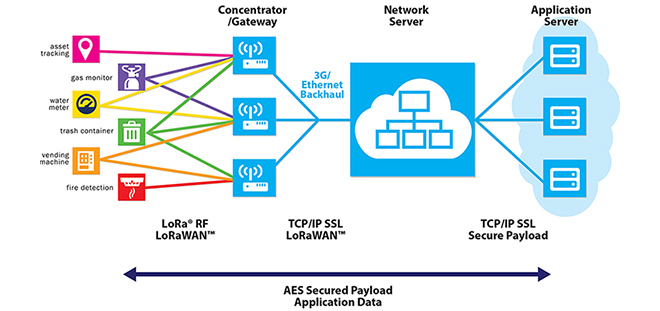- Home
- Symmetry Blog
- LTE Cat M1 vs NB-IoT vs LoRa - Comparing LPWANs | Symmetry Blog
LTE Cat M1 vs NB-IoT vs LoRa - Comparing LPWANs | Symmetry Blog
About Anuja Upale

Low-power wide-area network (LPWAN) opens up the possibilities for long-distance communication among IoT devices. While other forms of wireless networks, like cellular, offer effective and efficient communication channels, LPWAN specializes in low power usage commonly in demand among IoT applications. For small IoT devices to stay connected to a network without the burdens of a networks large battery drain, LPWAN is the solution.
There are multiple choices for LPWAN, each with their own specialties that help them differentiate themselves from the others. Wondering what are the differences between the various options offered for LPWAN?
Here is a quick look at the differences between LTE Cat M1, NB-IoT and LoRa:
What is LTE Cat M1?
LTE Category M1 (Cat M1) is a power and cost optimized cellular technology designed for IoT applications that functions on a 1.4 MHz (reduced from 20 MHz) spectrum, has a transmit power of 20Bm, and provides average upload speeds between 200 kbps and 400 kbps. This technology can extend battery life, potentially by up to 10 years.
Verizon, the U.S wireless operator, is about to release the Cat M1 technology along with multiple partners such as Sequans, U-Blox, Altair, Nokia, Ericsson and Gemalto. It will be released over the 4G LTE (Long Term Evolution) network with an open environment and is expected to reach nationwide U.S. coverage by the end of the first trimester of 2017.
The true advantage of Cat-M over other options out there is that Cat-M is compatible with the existing LTE network. For carriers such as Verizon and AT&T, this is great news as they don’t have to spend money to build new antennas. They simply need to upload new software as long as the devices operate within its LTE network. The existing customer bases of these two companies will most likely hear that Cat-M is by far the superior option.
Perhaps one of the most innovative things for Cat-M1 is that it's the first LTE based hardware architecture designed specifically for low-power and low-cost IoT applications. In the past, the hardware was always evolving with faster data rates to support broadband (phone, tablet, etc) applications.
Why use LTE Cat M1?
–Cheaper devices
–Long battery life
–Low data rates
–Extended coverage
–Massive number of device connections in a cell
To reduce the device cost, it will:
- Reduced RF bandwidth to 1.4 MHz only for data rate up to 1Mbps
- Single RAT support
- Limit to one antenna
- Lower modulation (QPSK only)
To prolong the battery life, it introduces special power mode for UE (Rel. 12, 13):
- PSM (power save mode): I am going to idle
- eDRX (extended discontinuous reception): allow page-able without Tx
LTE Cat M1 offers new power-saving modes
Power saving mode (PSM)
UE decides how often and for how long it needs to be active in order to transmit and receive data. Maximum PSM timer is 12.1 days
PSM mode is similar to power-off, but the UE remains registered with the network. This means that when the UE becomes active again there is no need to re-attach or re-establish PDN connections. This eliminates page monitoring between the data transmissions (UL)
Extended DRX cycle (eDRX)
It reduces power consumption by extending the sleeping cycle in idle mode (up to 40 min). It allows the device to turn part of its circuitry off during the extended DRX period to save power.
- eDRX at idle state: Sleep for longer time but stay attached
- eDRX at connect mode: Sleep for longer time but stay connected
- It is important to note that the UE can request to enable both PSM and extended idle mode DRX. It is up to the network to decide whether to allow both, or only one, or none of the capabilities.

What about NB-IoT?
NB-IoT (also called Cat-M2) has a similar goal to LTE Cat-M1, but it uses a different technology (DSSS modulation vs. LTE radios). Therefore, NB-IoT doesn’t operate in the LTE band, meaning that providers have a higher upfront cost to deploy NB-IoT.
Still, NB-IoT is touted as the potentially less expensive option as it eliminates the need for a gateway. Other infrastructures typically have gateways aggregating sensor data, which then communicates with the main server. With NB-IoT, sensor data is sent directly to the main server. For this reason, Huawei, Ericsson, Qualcomm, and Vodafone are actively researching and making an effort to commercialize NB-IoT.
What is LoRa?
LoRa is the short for "Long Range". It is the physical layer (PHY) which enables extremely long-range communication with optimized energy efficiency and the robust signal. "LoRa" and "LoRaWAN" are gaining much traction in several European countries, and there is an increasing trend in LoRa's popularity in other regions across the globe, such as the US and Asia Pacific regions too.
The LoRa PHY are optimized for battery lifetime and low cost of the end devices to enable volume deployments for applications, such as asset tracking, supply chain, agriculture, smart city, intelligent building, smart home, smart metering, etc.
To learn more about LoRa, please visit LoRa Alliance website.

Key Feature Of LoRa Technology
Key Features of LoRa Technology and the LoRaWAN Protocol
GEOLOCATION
Enables GPS-free, low power tracking applications
LOW COST
Reduces costs three ways: infrastructure investment, operating expenses and end-node sensors
STANDARDIZED
Improved global interoperability speeds adoption and roll out of LoRaWAN-based networks and IoT applications
LOW POWER
Protocol designed specifically for low power consumption extending battery lifetime up to 20 years
LONG RANGE
Single base station provides deep penetration in dense urban/indoor regions, plus connects rural areas up to 30 miles away
SECURE
Embedded end-to-end AES128 encryption
HIGH CAPACITY
Supports millions of messages per base station, ideal for public network operators serving many customers
Source: SEMTECH Website (“Key Features of LoRa Technology and LoRaWAN Protocol”)
Where would I get LPWAN modules?
Symmetry Electronics offers a variety of modules for LPWAN from Telit, Digi, MultiTech and Murata.
Telit
For locations where other coverage is difficult, low power wide area network (LPWAN) technologies like LoRa and Wirepas are a simple, quick solution. They are easy to deploy wherever needed and offer excellent battery life for devices that deliver updates intermittently.
Telit’s families of common form factor modules are pin-to-pin compatible enabling re-use of designs that require different air interface technologies as needed to support different environments.
For more on Telit products, click here.
Digi
Digi XBee3™ modules are the latest addition to the expanding Digi XBee Ecosystem of wireless modules, adapters and software – all engineered to accelerate development and deployment.
Ideal for low data (typically <5 MB per month and where latency is not critical), low power, low-cost applications, Digi XBee3™ Cellular LTE-M modules feature a power saving mode which extends sleep time and battery life.
Ideal for low data (typically <1 MB per month), low power, low-cost applications, Digi XBee3™ Cellular NB-IoT modules feature a power saving mode which extends sleep time and battery life.
For more on Digi products, click here.
MultiTech
The options for industrial connectivity are very broad. Applications which leverage multiple connectivity technologies can provide profound value with an improved return-on-investment, as they can be more flexible than strictly mobile or fixed applications. That’s why MultiTech offers a variety of embedded devices as well as modems, gateways and routers that address connectivity across a variety of technologies including LPWAN.
For more on MultiTech products, click here.
Murata
Murata joined the LoRa Alliance™ and worked together with STMicro and Semtech, to design a cost-effective, small form factor LoRaWAN™ module, capable of supporting a wide range of sensors and a long-range wireless protocol. Murata CMWX1ZZABZ module has pre-certified radio regulatory approvals for operating in the 868 and 915 MHz industrial, scientific and medical (ISM) spectrum in most geographical regions of the world. Well verified hardware and software of this module for developers are available on LoRa platform.
For more on Murata products, click here.
